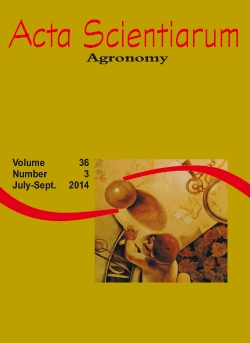<b>Fomesafen toxicity to bean plants as a function of the time of application and herbicide dose
Abstract
The objectives of the present study were to evaluate the impact of the time of fomesafen application and its dose on the tolerance of the common bean crop and to investigate the influence of environmental variables on herbicide selectivity. Two field experiments were conducted using the time of fomesafen application and its dose as factors. Crop injury from fomesafen reached 20% when evaluated one week after treatment (WAT). When sprayed at the warmest times of the day when irradiance levels were at their highest (11h00 and 16h00), fomesafen phytotoxicity was higher compared with other application times. Increased values of these two environmental variables, especially luminosity, was associated with high levels of fomesafen injury to the bean crop. However, assessments made at three WAT demonstrated that the crop had recovered from its initial injuries.
Downloads
DECLARATION OF ORIGINALITY AND COPYRIGHTS
I Declare that current article is original and has not been submitted for publication, in part or in whole, to any other national or international journal.
The copyrights belong exclusively to the authors. Published content is licensed under Creative Commons Attribution 4.0 (CC BY 4.0) guidelines, which allows sharing (copy and distribution of the material in any medium or format) and adaptation (remix, transform, and build upon the material) for any purpose, even commercially, under the terms of attribution.




















































